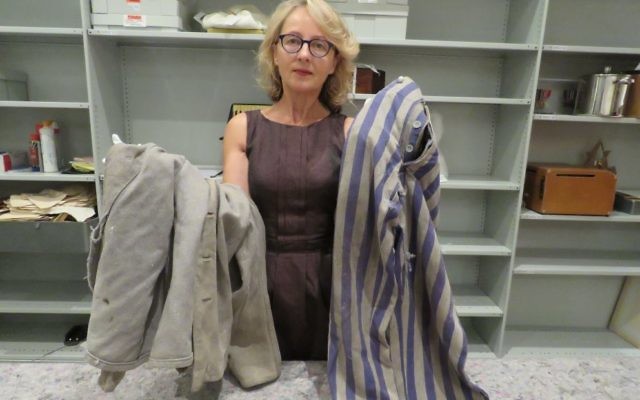Museum welcomes rare donation
The Sydney Jewish Museum’s collection now includes, for the first time, a pair of striped trousers once worn by a prisoner in Auschwitz.

THANKS to a personal donation made last week after a chance discovery in a backyard shed, the Sydney Jewish Museum’s (SJM) collection now includes, for the first time, a pair of striped trousers once worn by a prisoner in Auschwitz.
Head curator said the donation of the trousers, and a jacket, is timely given the museum’s new permanent Holocaust exhibition is due to open in just one month.
“Most survivors of concentration camps were unable to keep items, particularly larger items like clothing, so that’s why this donation is so unique,” Sugarman said.
“We will hopefully display it in the new exhibition, but it will also be a very useful resource in our education programs.”
The clothes were worn in Auschwitz by non-Jewish Belarusian man Wladzimierz Klunicki, who was born in Baranovichi in 1912 and died in Sydney in 1974, aged 62, as a result of ongoing illness and trauma related to his experience of incarceration.
According to a letter to the museum from the items’ donors, Klunicki’s daughter Helen and her mother Luba, he’d joined the partisans’ forest-based resistance campaign in his late 20s, helping to inflict damage on nearby German supply lines.
While the rest of his family were seized by the Russians and taken to Siberia, Klunicki was captured by the Germans and taken to Auschwitz.
After the war, he was taken to a displaced persons’ camp in Germany where he met his future wife, and the couple moved to Australia in 1948, married and had two children.
Sugarman said Helen informed her that her father died when she was only 15, and he’d seldom talked about his internment.
After discovering the clothes in a back shed, Helen was encouraged to donate them by a work colleague, Dr Fred Wechsler, an SJM volunteer.
Sugarman said Helen recalls her father having a prisoner’s tattoo on his arm, but he’d replaced it with a heart tattoo, and she does not remember what number it was.
There is a remnant of hand stitching on the jacket, which most likely held a copy of his prisoner registration number.
Another interesting feature of the jacket is a crudely stitched piece of fabric on the inside with an opening at the top, which the wearer probably made as a makeshift pocket.
“As custodians of these remarkable objects, we will endeavour to research [them] further and share their unfolding story,” Sugarman said.
SHANE DESIATNIK

comments